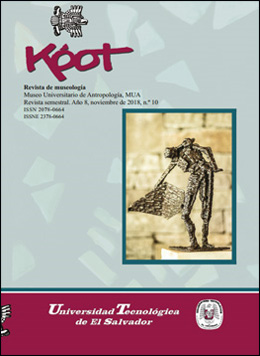The portrait of Dorian Gray : or the transition from ideality to reality
DOI:
https://doi.org/10.5377/koot.v0i10.6707Keywords:
Literature, Novel, History, Philosophy, Feelings, EdonismAbstract
It is not, by any means, our intention to make anybody believe that our reading of Oscar Wilde´s novel, The Portrait of Dorian Grey, is a final one; neither for us nor for any other reader. The only thing we are looking for is to provisionally expose what we think is, up to now, one of its possible readings, with the suspicion that we may even, in the future, have a different interpretation from the one we have now. However, through our reading we are looking forward to getting other possible readers interested enough to commit themselves with a formal and peaceful reading of such a beautiful novel.
The steps we have followed have included the introduction of an image for each of the characters in the novel; we begin with Lord Harry by focusing attention on his hedonistic views on life. Next, we describe Basilio, drawing attention to the discovery he makes of his art when he finds Dorian Grey. Then, we depict Sibila Vane, placing our interest of what we call here the transition from idealism to realism towards a true reality. Last, we describe Dorian Grey.
Downloads
956

